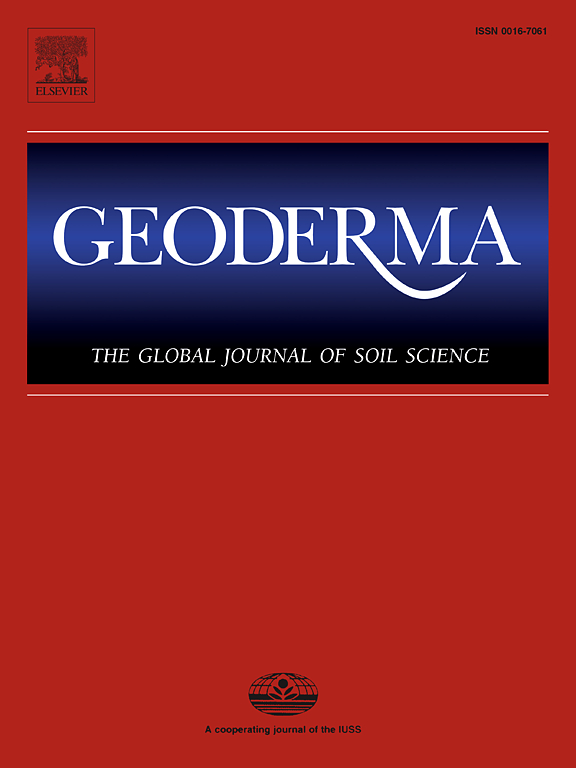Update and expansion of the soil and landscape grid of Australia
IF 5.6
1区 农林科学
Q1 SOIL SCIENCE
引用次数: 0
Abstract
The Soil and Landscape Grid of Australia (SLGA) has been significantly updated and expanded. The initial version, released in 2015, provided the first continental-scale characterization of soil resources adhering to GlobalSoilMap specifications. It featured digital maps for 11 key soil attributes (including bulk density, organic carbon, soil texture, pH, available water capacity, total nitrogen, total phosphorus, effective cation exchange capacity, and soil thickness) at a 90 m × 90 m spatial resolution and served as a widely accessed national resource with substantial global influence.
The updated version, developed between 2018 and 2023, includes enhancements to the original 11 soil attributes and introduces 13 additional products. These additions improve the representation of key soil characteristics, such as soil carbon composition, soil microbial distribution, and soil moisture fluxes, contributing to a more comprehensive understanding of Australia’s soil and landscape resources.
The updated data and methodologies offer a robust foundation for developing a national soil monitoring program and other applications. The advancements in the SLGA and its associated data systems are detailed, and all products are freely available for public use.
更新和扩展澳大利亚的土壤和景观网格
澳大利亚土壤和景观网格(SLGA)已经得到了显著的更新和扩展。第一版于2015年发布,提供了第一个符合GlobalSoilMap规范的大陆尺度土壤资源表征。它以90 m × 90 m的空间分辨率提供了11个关键土壤属性(包括容重、有机碳、土壤质地、pH值、有效水量、总氮、总磷、有效阳离子交换容量和土壤厚度)的数字地图,是一个广泛获取的具有重大全球影响力的国家资源。
本文章由计算机程序翻译,如有差异,请以英文原文为准。
求助全文
约1分钟内获得全文
求助全文
来源期刊

Geoderma
农林科学-土壤科学
CiteScore
11.80
自引率
6.60%
发文量
597
审稿时长
58 days
期刊介绍:
Geoderma - the global journal of soil science - welcomes authors, readers and soil research from all parts of the world, encourages worldwide soil studies, and embraces all aspects of soil science and its associated pedagogy. The journal particularly welcomes interdisciplinary work focusing on dynamic soil processes and functions across space and time.
 求助内容:
求助内容: 应助结果提醒方式:
应助结果提醒方式:


